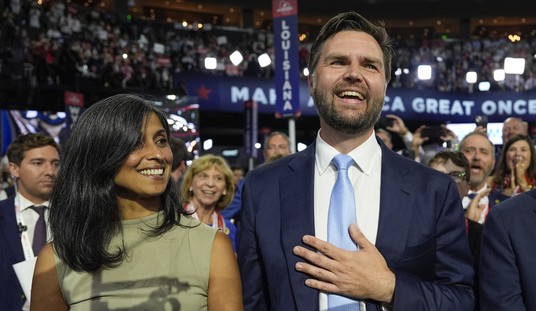In this episode of Don’t Shoot the Messenger, Unless It Makes You Feel Better to Do So…
So, here we find ourselves, one day removed from the 2022 midterm elections. The balance of power in Congress is still up for grabs — in both chambers. The much-ballyhooed “red wave” didn’t happen, after all. Now what?
While many never believed the red wave would materialize, media talking heads and keyboard warriors across the fruited plain not only told us it would happen; they told us it was happening, as election night unfolded.
Except it didn’t. Why not? That’s a yuuge — and necessary — question.
While political pundits galore began making excuses on Tuesday night, others offered objective analyses of what went wrong. So what were the real reasons the “inevitable” great red wave was in reality the not-so-great red trickle? The whole thing came down to three key factors; predicted by some and ignored or ridiculed by others.
1. With limited exceptions, 90 percent of election outcomes are baked in before the first vote is cast.
While some appear to believe every election begins at 0-0, it’s far from the case. Races generally begin in the 45-45 range, if not 47-47, with percentage points added or subtracted from each candidate’s “starting point” based on other factors, including where they stand on issues, who they face, and how they perform, but more importantly, where voters stand on them, and how many voters show up and vote.
2. Election turnout.
Pre-elections polls and surveys, regardless of how much they’re covered ad nauseam, are largely irrelevant. The only votes that matter are election ballots. As election history has shown us, when voter complacency — let’s call it overconfidence, this time — sets in, fewer voters vote, believing the election is already in the bag, so why bother? Hyping the daylights out a coming red wave that never came helped nobody on the Republican side of the aisle, and I’d argue it hurt the GOP.
3. Donald Trump.
Love him or hate him, to deny that Donald Trump’s presence loomed larger than life in the 2022 midterms is to deny reality. Exactly what impact Trump had on election results began Tuesday night and fiercely continued on Wednesday. Let the hate clicks begin, but Trump has never been in a weaker position than he now finds himself. As I suggested above, an increasing number of Republican voters believe — whether they publically admit it or not — that it’s time to move beyond Trump and his baggage, most of it self-inflicted.
“What baggage?” I’m often asked (or snarled at).
The latest ill-advised example came Saturday night at an Ohio rally when Trump mocked Ron Desantis — who won by almost 20 points on Tuesday, and gave the most stirring acceptance speech I’ve seen in all my years of covering politics — as “Ron DeSanctimonious.” Think about that. The self-proclaimed — and anointed by loyalists — de facto head of the Republican Party, mocks and ridicules the most popular governor in America, just three days before his race. What is that? Who does that? Donald Trump.
I recently wrote a piece in which I suggested that multiple Trump-backed candidates, while winning their respective primaries, would likely lose their elections, whereas non-Trump-supported candidates they defeated would’ve stood a better chance of winning. While several Trump-endorsed candidates prevailed, including J.D. Vance in Ohio, Ted Budd in North Carolina, Katie Britt in Alabama, and Eric Schmitt in Missouri, others failed.
The biggest blow came in Pennsylvania, where Democrat John Fetterman beat Trump-backed candidate, Mehmet Oz. Other races remained too close to call on Wednesday morning, including Trump-backed Arizona gubernatorial candidate Kari Lake, who trailed Democrat Katie Hobbs by less than a percentage point, and Trump-backed Georgia Senate candidate Herschel Walker, who remained in a statistical tie with Democrat incumbent Raphael Warnock, although a Wednesday midday update tilted the race toward Warnock, with a run-off now forced.
The deal: More than 23 key Trump-backed candidates went down to defeat, while several key races remain too close to call, and others are not looking good.
What, me worry?
So what does Trump think of all of this? Trump told NewsNation Tuesday that he should “get all the credit” if his chosen candidates win their elections, but “not be blamed at all” if they lose.
When they win, I think they’re going to do very well, I’ll probably be given very little credit, even though in many cases, I tell people to run, they ran and they turned out to be very good candidates.
But usually what would happen is, when they do well, I won’t be given any credit. And if they do badly, they will blame everything on me. So I’m prepared for anything, but we’ll defend ourselves.
How does a logical person respond to that? What logical person would say it?
In addition, Trump repeated his delusional claim: “I made Ron DeSantis.”
The Bottom Line
While the Democrats will face their own challenges in 2024, it’s time for the Republican Party to hold a frank national conversation about what was learned in the midterms, and how to best move forward after the vaunted red wave didn’t materialize.
That conversation must be about putting the GOP in the best position to recapture the White House. It must be about the most effective way to lead an America that is badly fractured, and effectively convey a winning plan to voters. The midterms should serve as a deafening warning shot, given the last two years under Biden’s disastrous presidency, that things need to change and they need to change rapidly, with the 2024 election just 24 months away.
Let the chips fall where they may, but doing the same thing over and over again and expecting different results?
Yeah, insanity.













Join the conversation as a VIP Member